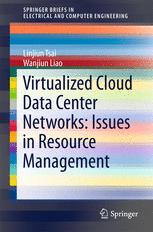

Most ebook files are in PDF format, so you can easily read them using various software such as Foxit Reader or directly on the Google Chrome browser.
Some ebook files are released by publishers in other formats such as .awz, .mobi, .epub, .fb2, etc. You may need to install specific software to read these formats on mobile/PC, such as Calibre.
Please read the tutorial at this link: https://ebookbell.com/faq
We offer FREE conversion to the popular formats you request; however, this may take some time. Therefore, right after payment, please email us, and we will try to provide the service as quickly as possible.
For some exceptional file formats or broken links (if any), please refrain from opening any disputes. Instead, email us first, and we will try to assist within a maximum of 6 hours.
EbookBell Team

4.8
104 reviewsThis book discusses the characteristics of virtualized cloud networking, identifies the requirements of cloud network management, and illustrates the challenges in deploying virtual clusters in multi-tenant cloud data centers. The book also introduces network partitioning techniques to provide contention-free allocation, topology-invariant reallocation, and highly efficient resource utilization, based on the Fat-tree network structure.
Managing cloud data center resources without considering resource contentions among different cloud services and dynamic resource demands adversely affects the performance of cloud services and reduces the resource utilization of cloud data centers. These challenges are mainly due to strict cluster topology requirements, resource contentions between uncooperative cloud services, and spatial/temporal data center resource fragmentation. Cloud data center network resource allocation/reallocation which cope well with such challenges will allow cloud services to be provisioned with predictable network performance, mitigate service performance degradation and even guarantee service level agreements.
Virtualized Cloud Data Center Networks: Issues in Resource Management tackles the challenges of managing cloud data center networks and introduces techniques to efficiently deploy large-scale distributed computing applications that require predictable performance in multi-tenant cloud data centers.